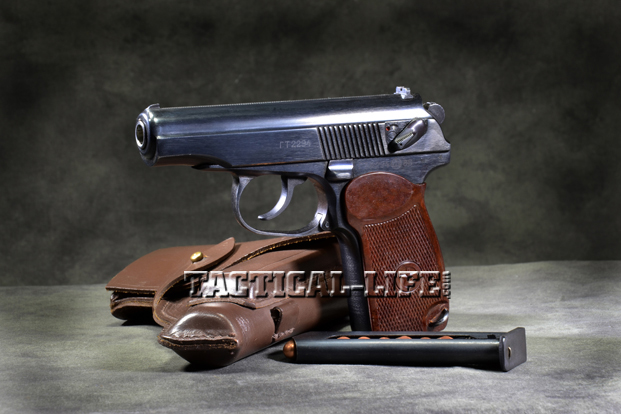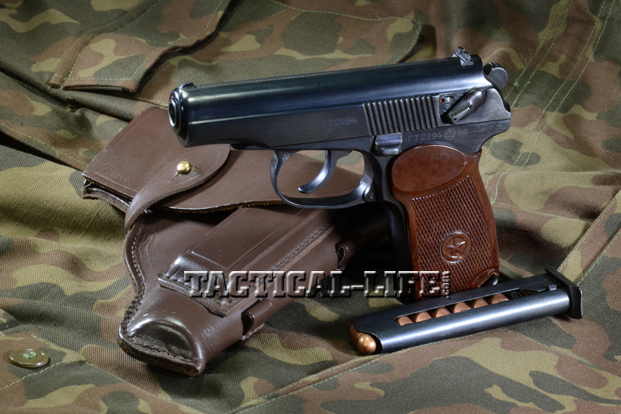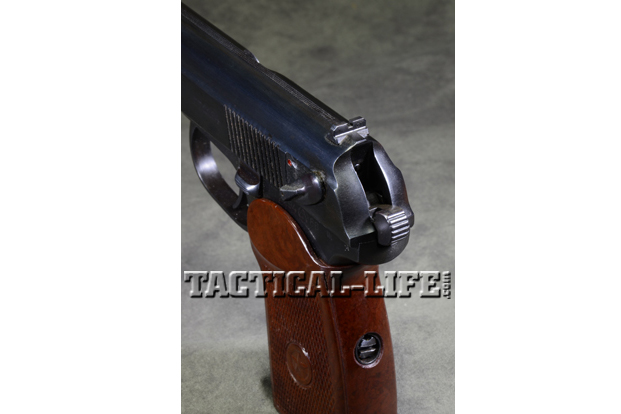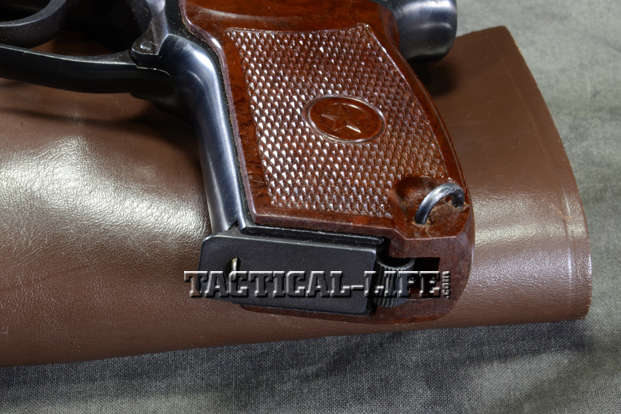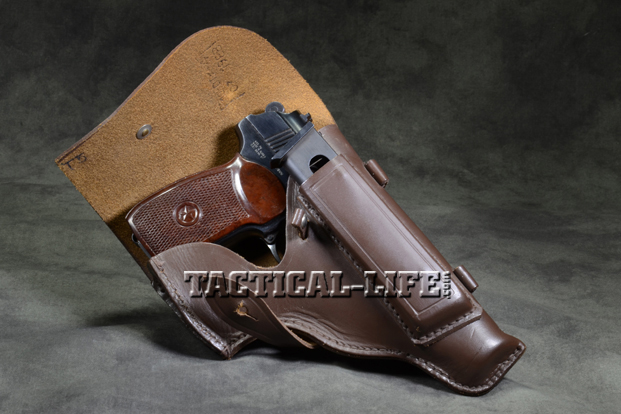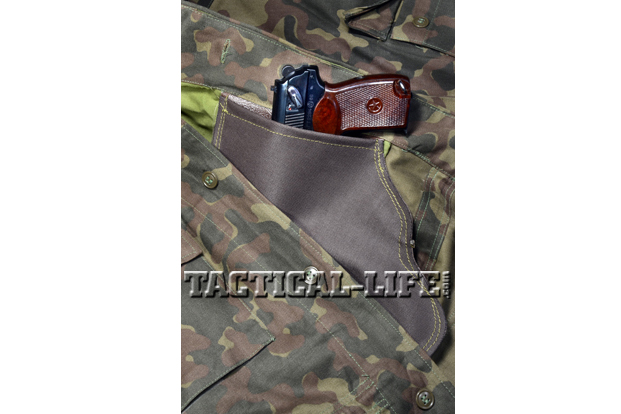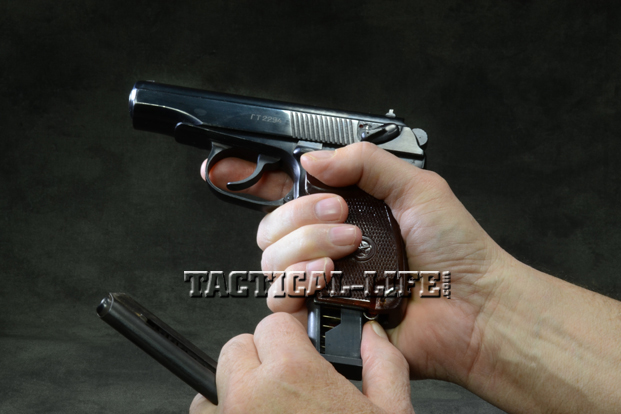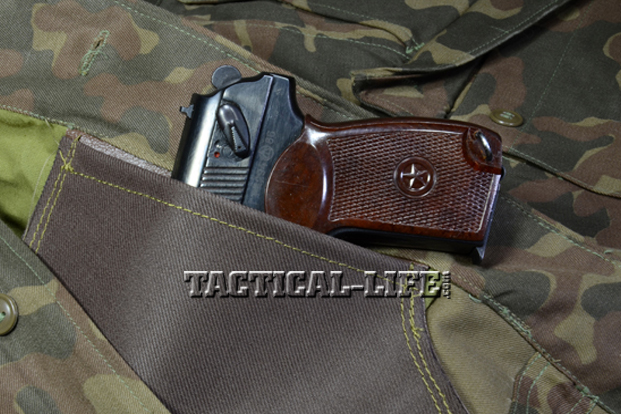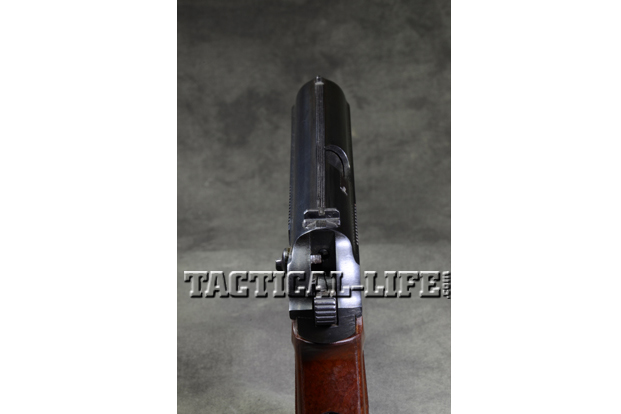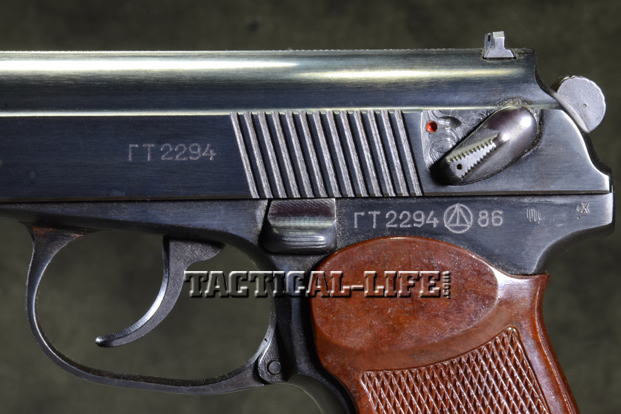My experience with the Makarov pistol (also known as the “PM,” or Pistolet Makarova) goes back further than the lives of many Americans. The first one I shot was in the mid 1970s, a Chinese example a friend had captured in Laos. It was brand new and unfired. I managed to track down some 9x18mm ammunition, and when I visited him we fired it. The ammo was corrosive, so I made sure to clean the immaculate pistol with lots of hot water followed by GI bore cleaner and plenty of oil. Over the next decade or so I had access to Makarovs in my travels and even carried one a couple of times. I became most familiar with the PM when I included it among the weapons I used in the “Surviving in Dangerous Places Training” I used to give. Along with the Tokarev TT-33, the Browning P-35 and various other weapons, I taught my trainees to disarm their attackers and quickly turn the weapons against them. But the high point of my “in the day” Makarov experiences occurred when I was in Russia. I was put through Makarov close-combat drills by a former Spetsnaz I was working with. This included the Spetsnaz “ground training,” which involved a drill where I started from prone then engaged, rolled onto my right side then engaged, rolled onto my back then engaged, and rolled onto my left side then engaged, all at 7 meters. I had fired a double-tap from each position, and as I repeated the drill a couple of times, I actually got faster and managed center-mass hits. In one version of the drill I had to fire over my head while on my back; in another, forward while on my back.
My almost 40 years of contact with the Makarov have made me a fan of the pistol. Thousands of U.S. shooters now feel the same thanks to the Makarov being imported in some numbers. Most of these have been Bulgarian and East German variants, both good, and a limited number (in original configuration) have been Russian. I grabbed onto one of the latter, and it’s the one I currently shoot. I also purchased a case of non-corrosive 9x18mm ammo a few years ago and, in shooting my Makarov, have depleted it by a couple hundred rounds each year.
Postwar Machines
The Makarov PM owes quite a bit to German weapons and ammunition that were captured during World War II. Many features of the Makarov are based on the Walther PP, while the 9x18mm round was based on the 9mm Ultra, which was developed to make the PP more powerful. The 9x18mm Makarov round is more powerful than the 9x17mm (.380) cartridge and is usually accepted as the most powerful practical round for a compact blowback pistol. The PM was developed by Nikolay Fyodorovich Makarov and in 1951 became the standard Soviet military sidearm. It was developed to be easy to produce, simple to operate and maintain, and utterly reliable. For a large portion of Russian police and military personnel, the PM remains the primary pistol, though some have the improved PMM, which has a larger magazine capacity (10 or 12 rounds) and takes a hotter 9x18mm round with a steel core for better penetration. To handle the hotter round, the PMM has three spiral grooves in the chamber to delay the blowback action. However, the units that adopted the PMM generally did not use the hotter ammunition, out of fear it would end up in the older guns (the PMs).
Advertisement — Continue Reading Below
Some PMM pistols were imported into the U.S., but all the ones I’ve seen have goofy adjustable sights to make points. I actually purchased a PMM so I could become familiar with it, but it bothered me that it didn’t have the right sights. I guess I could have tried to switch them out for the correct ones, but I sold it instead. (If I find a PMM that is “stock” Russian, I’ll buy it in a minute.) Some imported PMMs were chambered in 9x17mm (.380), but the one I had was in 9x18mm.
Ammo & Carry
There are five basic 9x18mm Makarov loads: the 57-N-181S, which has a steel-core bullet and gives relatively good penetration; the 57-N-181SM, designed for SMGs and PMMs and possessing much higher muzzle velocity; the RG028, which has a hardened steel core and is designed as an armor-piercing round; the SP-7, designed for enhanced stopping power; and the SP-8, which has reduced power to limit penetration. According to the Russians I worked with, the SP-8 load was used by Russian air marshals. I did shoot one of the PMMs with a heavier load—but don’t remember which one, probably the 57-N-181SM—and found that it does recoil more noticeably than the PMs I’ve shot. I also found the double-column grip poorly designed in terms of comfort while shooting. I much prefer the standard PM. Most of my Russian contacts, some of whom are former Spetsnaz working on close protection details, prefer the PM as well. Interestingly, one of my Russian contacts who served with a special police unit was issued the new Yarygin pistol, or PYa, which is chambered for a very hot 9x19mm load. He still carries a PM, though, in an inside pocket of his uniform jacket.
A friend who served as an officer in a Russian Naval Infantry (Marine) unit sent me one of his uniforms with an inside pocket specifically for a PM pistol. I always thought it was very clever, as he could walk around apparently unarmed yet still have his PMM at hand. If you’ve seen the standard Naval Infantry Makarov holster, the concealment pocket may make more sense. It is a typical flapped Makarov holster with a spare magazine pouch suspended from the belt on a pair of hangers. Fast draw and fast access were not primary concerns in its design. As full-case leather holsters (which are favored by many European military and police) go, the standard Makarov holster isn’t bad. It offers decent protection from Russian weather, isn’t too bulky and readily carries the pistol and one spare magazine. Access to the weapon is slow, however: The strap that secures the flap must be released, then the pistol is raised in the holster for the draw using a pull strap. There was also a shoulder holster that was used by the KGB and other plainclothes personnel. When I was in St. Petersburg, I met a female bodyguard who was an ex-member of the KGB and had carried her Makarov in a shoulder holster. She was one of the female bodyguards working in Russia who passed herself off as a personal assistant or secretary when accompanying her principal. My Russian contacts thought very highly of her shooting skills and her ability at Systema/Sambo combat.
Advertisement — Continue Reading Below
Having come from the U.S., where I am used to seeing police duty belts packed with gear, it was interesting to see many Russian beat cops carrying only their Makarovs, each in the standard holster on a thin leather belt—nothing else. Maybe they had cuffs in their pockets. I should mention I saw one other Makarov holster. It was with a former KGB protection officer who was working for an arms dealer in Brussels at the time I knew him. He had actually read some of my close protection articles and we became fairly friendly swapping stories. Along with the various weapons he had to demo was a Makarov PB, the special ops version with an integral suppressor. Though the suppressor is integral, it is in two parts to allow the front portion to be removed for ease of concealment. My contact had a shoulder rig that had a pocket for the front of the suppressor and a spare magazine under the arm opposite the holster. I believe there is a special belt holster as well. I didn’t get a chance to shoot the PB. We were having lunch in Brussels when he showed me the pistol off at a corner table. It was all good though: He took me to a range the next day and let me shoot up a case of 5.45x39mm ammunition through an AKSU and AK-74, when most Americans had never seen these weapons.
Word To The Wise
Many of you reading this will be familiar with the Makarov as many have been imported to the U.S., especially the Bulgarian variants. But for those who have yet to shoot a Makarov, I’ll offer a few comments. First, the Makarov has a very heavy double-action pull, but the single-action pull isn’t too bad. Second, it has a bottom magazine release, which doesn’t really bother me that much. I’ve used them enough to know how to stick the spare mag between the fingers of my support hand and combine the operation of stripping the empty magazine and inserting a fresh one. Third, the lanyard ring is a good feature on a military or police pistol, but I can attest to the fact that it digs into one’s side when thrusting a Makarov into the trousers in the crossdraw position. Fourth, the safety/hammer drop is counterintuitive for those of us who are used to Walther PPKs. The safety must be in the down position to chamber a round. Once the round is chambered, pushing the safety up drops the hammer and locks the slide closed. The pistol may be carried this way and the safety thrust down before pulling the double-action trigger. Or it may be carried with the safety down, ready for a double-action pull. I normally used the second method. The sights are adequate. Is the Makarov a great combat pistol? Well, you’ll have to define great. It has certainly seen decades of use with some hard-core Russian military and police. As for me, it’s one of my favorite “modern” military pistols. That’s partially because I grew up during the Cold War when the Makarov’s were scarce—I wanted one. I think I also like it because I had a professional interest for many years in Soviet special operations capability. Whatever the reason, I like my Makarov. Speaking of which, I think it’s due for a field trip the next time I go shooting. ★
